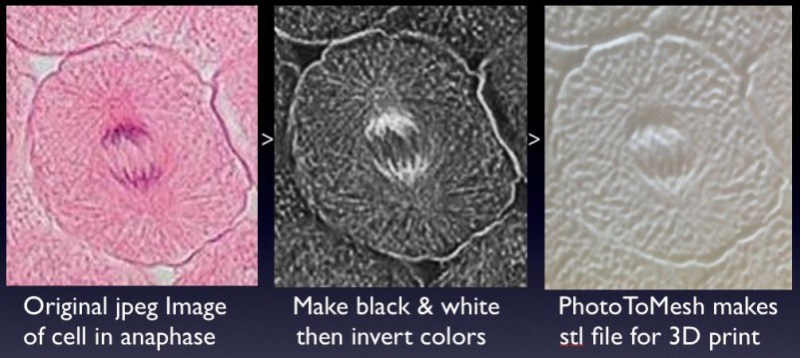Cell biology professor [Mike] has created a way for blind students to decipher microscope slides using 3D prints and the magic of capacitive sensing. His write-up focuses on a slide showing the anaphase stage of mitosis in whitefish blastula, a popular choice for studying cell division. When a student touches a certain area of the print, the capacitive sensor triggers audio playback to tell them what they’re feeling.
[Mike] started by turning a 2D image of a cell into a 3D print. To do this, he made the image black and white, and then inverted the colors so that the 3D print’s topography will correspond correctly. The talking part is handled by an Arduino Duemilanove and a Spikenzie voice shield. The latter has a somewhat limited amount of space, but is more than adequate for the audio labels [Mike] made, which are all less than three seconds long.
A hard copy of the 2D file comes in handy for making sure the cap sensors are in the right places. To make those, [Mike] cut up some floor protector pads and covered the sticky side with copper tape. These are held on the 2D image with double-sided tape. The 3D print sits on top, separated by more furniture pads at the corners. He labeled this scientific sandwich model with a 3D printed Braille label that reads ‘anaphase’. [Mike] has made the referenced STL file along with a few others available at the National Institutes of Health’s 3D print exchange site.

















That’s great and everything but how practical is this actually?
Do you want a blind guy working on your lab results?
how would you feel if you were blind and couldn’t fulfil your dream of being a lab technician? so what if they make a few more mistakes than a sighted person, at least they are trying!!!!!
I feel that knowing a bit about cells allows me to comprehend the world in a way that I wouldn’t be able to otherwise. I am not a lab technician. To be perfectly honest the blind guys are probably not going to be lab technicians either. Who cares. Learning is fun. Let them.
ADA
‘nough said.
Talking about tactile, I had this idea the other day, what if you took two small magnets, put them on top of each other in a small tube or some such with the poles facing each other so they repel, then have the top one made so you can press it, and you got a very interesting feeling switch when you put contacts on both sides.
Cudos to a professor that wants to reach all his students, and the effort and ingenuity he used to do it!!!
I think this also has some very interesting UI applications.
There are several programs online and even photoshop plugins that will make normal maps for you automagically :)